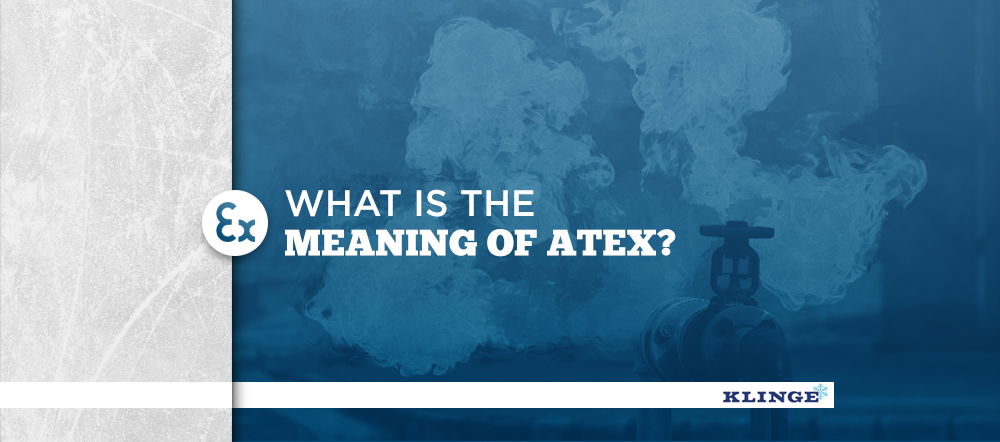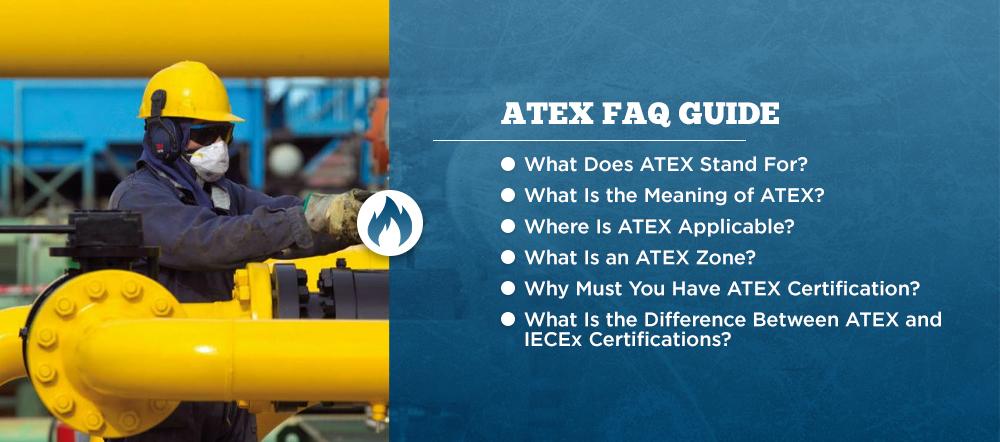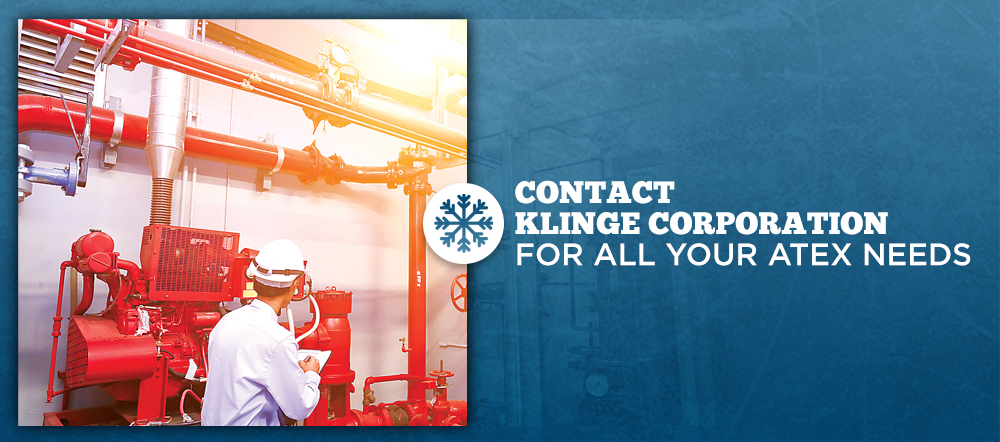When your business involves military ordinance, chemical goods or oil and gas products and derivatives, safety must come first. In operations where explosive atmospheres could develop, it’s essential to have equipment that can function safely even under extremely hazardous conditions.
Fortunately, a few different national and international standards exist to regulate the equipment that operates in potentially explosive environments. One of those is the European Union’s ATEX directive. So what is ATEX? In the guide below, we’ll discuss what the ATEX directive is and what it does, why ATEX certification is a requirement and how it differs from other critical standards for workplace operation in explosive environments.
Table of Contents
- What Is the ATEX Directive?
- What Does ATEX Stand For?
- What Is the Meaning of ATEX?
- Where Is ATEX Applicable?
- What Is an ATEX Zone?
- Why Must You Have ATEX Certification?
- What Is the Difference Between ATEX and IECEx Certifications?
What Is the ATEX Directive?

The European Union’s ATEX directive is the world’s generally accepted standard for the use of equipment in explosive atmospheres. It contains minimum requirements for improving the safety and health protection of workers who are potentially at risk from explosive atmospheres, like those in the offshore oil and gas industry.
As it exists today, the ATEX mandate arose in response to the 2010 oil spill in the Gulf of Mexico, which sent thousands of gallons of oil into the water. That disaster led to increasing worldwide awareness of the dangers associated with transporting hazardous materials. In the aftermath of the accident, members of the international community, and particularly the European Union (EU), took steps to establish new standards. These new standards would promote the secure engineering of transport products and ensure safety during shipments of hazardous goods.
The ATEX ruling has two separate components: one dating from 1999 and the other established in 2014. The 1999 directive deals with the precautions that workplaces must take when dealing with the explosive atmospheres that might be present because of combustible or flammable dust, vapors or gases. The 2014 mandate, on the other hand, deals directly with the products provided for use in hazardous and explosive environments.
Oil and gas companies, in particular, rely on the ATEX standards for safety clarification when shipping hazardous products around the world.
ATEX FAQ Guide
Below are the answers to some frequently asked questions about ATEX.
1. What Does ATEX Stand For?
ATEX comes from the description of the hazardous materials in question, as written in French — “Appareils destinés à être utilisés en ATmosphères EXplosives.” The translation into English reads, “Devices intended for use in explosive atmospheres.”
2. What Is the Meaning of ATEX?
ATEX designates hazardous materials such as explosives. It imposes requirements for companies that handle and transport those dangerous materials, and it requires those companies to protect their employees from the risk of explosion.
3. Where Is ATEX Applicable?
ATEX is applicable in atmospheres where explosions can occur because of dust, vapors or gases that are likely to ignite or detonate. So, it applies to most workplaces that use or store flammable or explosive materials — for example, factories that use flammable products or generate combustible clouds of dust. Other examples of workplace operations where ATEX is likely to apply include chemical processing, paint spraying, flour production and milk drying.
4. What Is an ATEX Zone?
Under the ATEX directive, workplaces must classify any areas where explosive atmospheres are likely into zones. The likelihood that an explosive atmosphere will develop, as well as how long the explosive atmosphere will persist if it does develop, determines the classification, size and location of the zone.
For instance, zone classifications for gas, vapor and mist hazards include the following.
- Zone 0: Zone 0 is the classification given to areas where explosive atmospheres containing hazardous gas, vapor or mist will occur frequently or for extended periods.
- Zone 1: Zone 1 is the classification given to areas where explosive atmospheres containing hazardous gas, vapor or mist will occur sometimes, but not extensively.
- Zone 2: Zone 2 is the classification given to areas where explosive atmospheres containing hazardous gas, vapor or mist will occur infrequently or for short durations.
Similar classification zones exist for other explosive hazards like dust and fibers.
- Zone 20: Zone 20 indicates areas where explosive atmospheres containing a cloud of combustible dust will occur frequently or for extended periods.
- Zone 21: Zone 21 indicates areas where explosive atmospheres containing a cloud of combustible dust will occur sometimes, but not extensively.
- Zone 22: Zone 22 indicates areas where explosive atmospheres containing a cloud of combustible dust will occur infrequently or for short durations.
5. Why Must You Have ATEX Certification?
ATEX certification is a requirement to ensure safety in the workplace by determining whether equipment is suitable for operation in a potentially explosive environment. The certification usually involves an impartial third-party organization that provides testing as part of the certification process. However, companies may self-certify specific minor equipment, such as technical drawings and user manuals. Certified equipment receives a “CE” marking to indicate compliance and an additional “Ex” marking to indicate official certification under the ATEX directive.
6. What Is the Difference Between ATEX and IECEx Certifications?
The IECEx System is the International Electrotechnical Commission System for Certification to Standards Relating to Equipment for Use in Explosive Atmospheres. IECEx certification, unlike ATEX certification, is for promoting international business. It certifies equipment and services for their suitability on global markets, focusing on safety in explosive environments. ATEX is derived from the IECEx, but with jurisdictional deviations to match the needs of the EU. IECEx has a few primary goals:
- Reducing manufacturer costs for testing and certification
- Minimizing time to market for products
- Boosting international confidence in product evaluation measures
- Maintaining a central international database
- Enhancing the international reputation of equipment and services via IECEx certification
ATEX certification differs from IECEx certification in a few fundamental ways.
- Jurisdiction: IECEx applies internationally. ATEX applies only in the European Union, though many companies outside the EU use it voluntarily – ATEX is derived from the IECEx, but with jurisdictional deviations to match the needs of the EU.
- Standards: ATEX does not require strict adherence to International Electrotechnical Commission (IEC) standards. Instead, it requires adherence to its unique essential health and safety requirements (EHSRs). As a practical matter, however, many companies use compliance with IEC standards to demonstrate compliance with EHSRs.
- Certification: Organizations that offer ATEX services are notified bodies, or ExNBs. They are particular to specific countries within the EU and issue certificates called EU Type Examination Certifications. The IECEx Management Committee oversees IECEx certification via a single international process. IECEx certification bodies and IECEx testing labs issue Certificates of Conformity recognized worldwide.
Contact Klinge Corporation for All Your ATEX Needs
To see the benefits of high-quality ATEX-certified equipment and promote safety in your business, partner with Klinge Corporation. Our refrigerated shipping containers for explosives and other hazardous products give you the peace of mind you need for your employees and clients. We can provide specialized containers for military operations, the oil and gas industry and the chemical industry to help ensure safety around volatile chemical products.
For more information on our products, such as our container refrigeration units, refrigerated tank containers, portable freezer units, and temperature-controlled pharmaceutical containers, talk to one of our specialists at Klinge Corporation to identify which type of container you need. If you already know your shipping requirements, feel free to request a quote from us.



